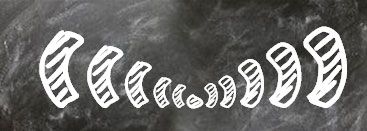We gebruiken cookies uitsluitend om uw kleurenschema en taalkeuze te onthouden. Maak uw keuze aub.
Nous utilisons des cookies exclusivement pour sauvegarder votre schéma de couleur et votre langue préférée. Choisissez svp.
We use cookies only to remember your preferred color scheme and language. Make your choice please.

Tone Frequency CAB
Explained and how to get rid of it.
Network operators send signals over the electricity network to switch equipment at regular intervals. Examples of this include turning on and off street lights or adjusting the dim level, switching between day and night rates for dual meters, switching PV installations, and accumulator heating, etc.
Technically, a pulse train is superimposed on the 230V 50Hz voltage that has a frequency between 110Hz and 1700Hz with an amplitude of around 10V. This pulse train is then decoded by the equipment in question and the intended action is performed.
Example graphic display: the orange line shows the distorted 50Hz sine wave the green line shows the 50Hz sine wave as it should be (in this case, the result after filtering)

In order to ensure that this pulse train is received correctly, it is sent multiple times in succession with a small pause. This can sometimes cause interference for 10 to 15 seconds.
What are the disturbances that can arise from this for household appliances: Occasionally flickering LEDs, turning on or off of a stove, turning on or off of a smart TV, occasional humming in a sound system, etc. See the resulting problem on (often dimmed) LED lamps :
These are phenomena that are increasingly appearing in complaints to the suppliers of the relevant equipment.
The network operators are still within the norms despite the disruptive effect and cannot be held responsible for this. The network operators are aware that this is an outdated technology and are looking for alternatives, but this takes time and it may take several more years before TF / CAB signals will no longer be placed on the network. Meanwhile, it is up to the designer of electronic equipment to ensure that these signals do not cause disturbances on their equipment. This is not easy to achieve, especially not for cheap equipment. In addition, the frequencies are different per region and there may be multiple in the same region.
Tackling the problem at the root is certainly not easy, and this must then be done per device.
See how we solve this problem with our SDACAB module.